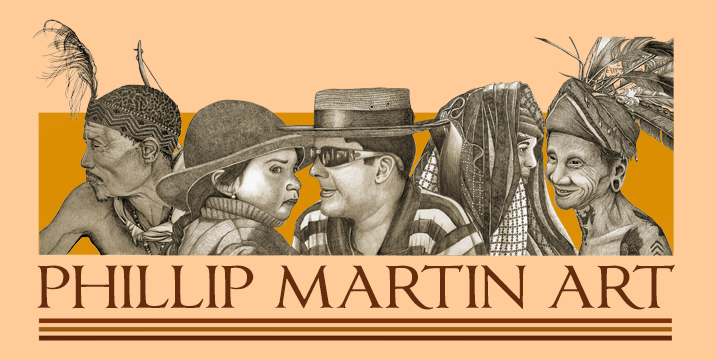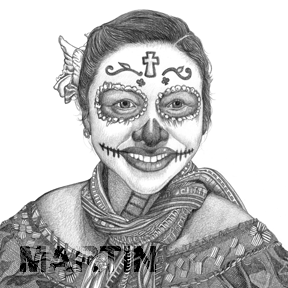


This portrait almost never happened.
I really didn't know much about the Day of the Dead. It’s been going on for thousands of years. Origins of the celebration started with the Aztec and other ancient people of Mexico who considered death just a part of the cycle of life. However, the dead in these societies were not considered dead and gone. They were still a part of the community and kept alive in memory and spirit. And, it gets a little more special (or eerie, depending on how you look at it).
On the Day of the Dead, these not so long lost family members come back to Earth, temporarily. If you happen to be in Mexico in early November, you can expect a holiday that is a combination of pre-Hispanic religious rights, Christian feasts imported by the Spanish and now (sad to say) Halloween is also tossed into the mix. But, UNESCO has added the celebration to its list of Intangible Cultural Heritage of Humanity.
I asked a few Mexican friends about their families and the Day of the Dead.
Was it more of a fiesta with friends or a special occasion with
family? Family.
And, even though I asked about food and traditions, showing so much
interest in their culture, there was no invitation for a gringo to join
family members at any celebration or local cemetery.
Now, if I were to get the kind of photo I really wanted, I could have gone
to a cemetery without an invitation.
But, I am not the kind of person to invite myself to a private family
celebration with complete strangers.
It just would not happen.
Besides, after a day of painting a mural under the Mexican sun, I was tired
and ready to just stay home.
However, I knew that it was the only time I'd ever been in Mexico for the
Day of the Dead. I had to
explore. And, in Playa del
Carmen, if you aren't going to a cemetery, you can always explore Fifth
Avenue.
Continue on to Americas Image 1, 2, 3, 4, 5, and 6 or back to the Portraits Home Page.